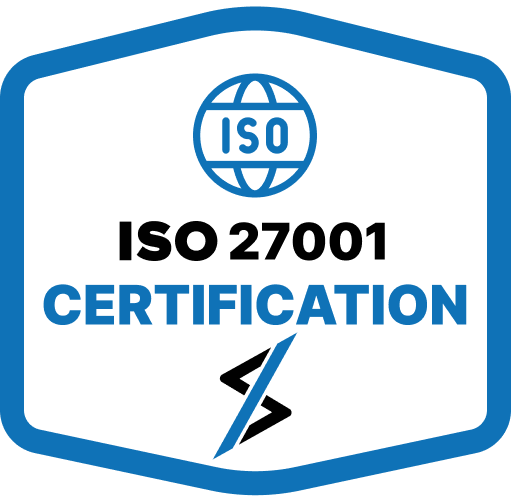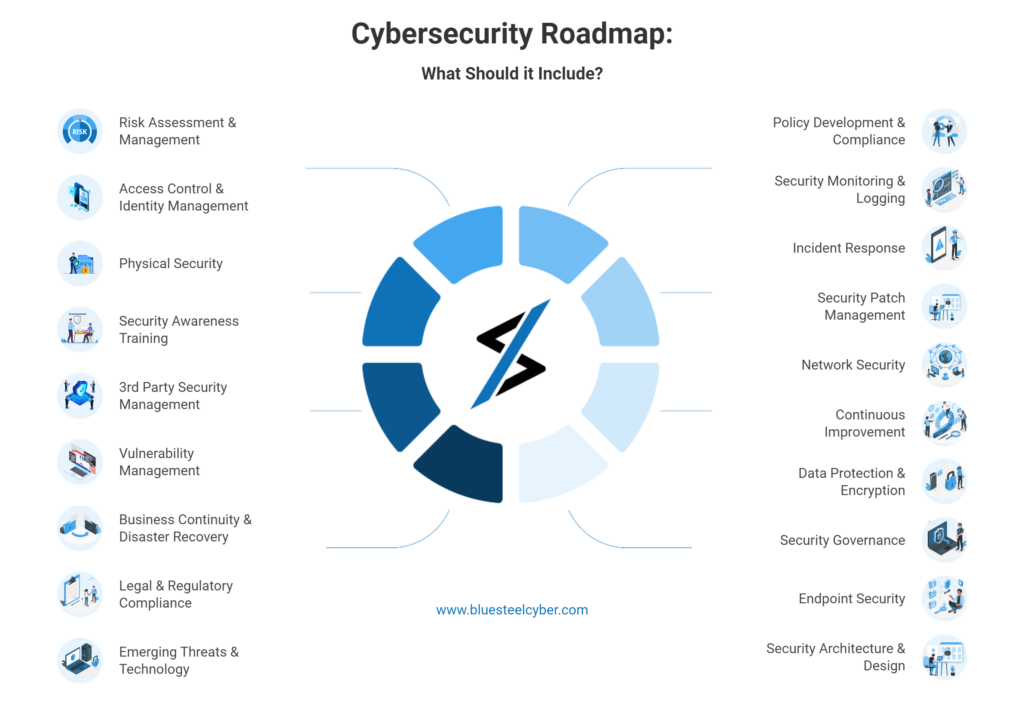
Bridging the Gap: What HR Needs from IT and What IT Needs from HR
Introduction The digital transformation of businesses has blurred the traditional boundaries between HR and IT. Human Resources (HR) departments increasingly
ISO/IEC 27001 certification is an excellent framework for organizations that want to strengthen their data protection practices and reduce the risk of experiencing cyber attacks.
When your organization becomes ISO/IEC 27001-certified and abides by the standards laid out in this framework, you show that you are committed to information security, which can encourage stakeholders to trust and work with you in the future.

We manage all areas of ISO 27001 compliance as your outsourced cybersecurity department so you don’t have to.
Our ISO 27001 Security Program includes everything you need to meet all levels of ISO 27001 criteria items. This includes the following:
Compliance with ISO/IEC 27001 offers many benefits for organizations and their customers/clients. The following are some of the top reasons to consider implementing this framework:
If your organization is ISO/IEC 27001-compliant and certified, you can show clients and potential clients that you care about strong security practices. Showing your commitment, in turn, can help you win new contracts and gain an advantage over other businesses in your industry.
Globally, the average cost of a data breach is $4.35 million. When you abide by the standards laid out in ISO/IEC 27001, you can reduce your risk of data breaches and, therefore, the costs associated with them.
Compliance with the ISO/IEC 27001 standards helps you to comply with other essential regulations, such as the General Data Protection Regulation (GDPR) and Network and Information Systems (NIS) Regulations.
Abiding by ISO/IEC 27001 standards can help your organization develop and stick to a clear, well-organized information management protocol. Better structure in this arena can lead to increased productivity and faster, better decision-making.
It’s easy to be blinded to certain aspects of your company’s security protocols when you’re too close to them. Having an independent, third-party professional review your security system can help you identify gaps that you’ve missed previously and make your entire plan more effective now and in the future.
Any business, regardless of its size, objectives, or structure, can benefit from becoming ISO/IEC 27001-certified.
Data theft and cybercrime are on the rise worldwide, and organizations of all kinds are vulnerable. Developing and applying a solid risk management process will mitigate the chances of a cybersecurity breach and will provide all the advantages shared above.
The information technology industry has the most ISO/IEC 27001- certified enterprises. However, businesses across all industries and economic sectors can benefit.
The three principles of information security outlined in the ISO/IEC 27001 standard are known as the CIA triad. CIA is an acronym that stands for the following:

This principle ensures that only the right people can access the organization’s information.

This principle ensures that the data an organization uses or keeps safe is stored reliably and isn’t erased or damaged.

This principle ensures that the organization and its clients can access information as needed.
Put simply, an ISO/IEC 27001-certified information security management system will preserve information’s confidentiality, integrity, and availability, giving confidence to all stakeholders and invested parties.
Being compliant with ISO/IEC 27001 means that your organization is following the framework’s standards (or at least parts of them).
Certification takes things a step further. It shows that your organization’s ISMS is compliant with all aspects of the framework.
Auditors, known as Certification Bodies, verify this level of compliance and award certifications to businesses that have taken the time to meet all standards.
Start by expanding your understanding of ISO/IEC 27001 and all that the standard entails. Many people do this by purchasing a copy of the standard through the ISO organization or signing up for a training class.
It also helps to appoint an ISO/IEC 27001 champion who will spearhead the process of learning essential elements of the standard, sharing necessary information with other team members, and creating a plan for implementing the ISO/IEC 27001 requirements into the organization.
Break down essential elements of this project, including the specific objectives you hope to achieve, how much it will cost, how long it will take, and whether you’ll use external or internal experts to oversee the process. Consider whether the ISMS will extend to the whole company or only apply to certain departments, locations, etc.
A management framework will describe the processes your organization needs to go through to meet its ISO/IEC 27001 implementation objectives. Examples of these processes might include scheduling activities or scheduling regular audits
ISO 27001 does not require organizations to follow a specific risk assessment methodology. However, it does require a formal risk assessment to be carried out — formal, in this case, means the process is pre-planned and that the data, results, and analysis are recorded.
A Statement of Applicability (SoA) and a risk treatment plan (RTP) are both mandatory reports needed to show evidence of the risk assessment.
Based on the risks identified through the risk assessment, your organization must decide whether you will treat, tolerate, terminate, or transfer them.
Document all risk responses so the auditor can review them during the final certification audit.
The ISO/IEC 27001 standard requires that organizations initiate staff awareness programs to raise information security awareness company-wide.
You must also implement policies that direct your employees toward better information security-related practices, such as a requirement to lock computers whenever a team member leaves their workstation.
The ISO/IEC 27001 certification process requires you to produce extensive documentation showing your ISMS processes and policies. The following are some of the most important documents you’ll need to share during the audit process:

The scope of the ISMS

Information security policy

Information security risk assessment process

Information security risk treatment process

The Statement of Applicability

Information security objectives

Evidence of competence

Documented information determined by the organization as being necessary for the effectiveness of the ISMS

Operational planning and control

Results of the information security risk assessment

Evidence of the monitoring and measurement of results

Results of the information security risk treatment

A documented internal audit process

Evidence of the audit programs and the audit results

Evidence of the results of management reviews

Evidence of the nature of the non-conformities and any subsequent actions taken

Evidence of the results of any corrective actions taken
The ISO/IEC 27001 framework supports continuous improvement. It requires organizations to continually analyze and review the performance of the ISMS and identify improvements that can be made to existing processes and controls to make them more effective.
ISO/IEC 27001 requires internal audits of the ISMS at specific, pre-planned intervals.
Registration audits can only be conducted by an independent registrar who is accredited by your country’s accreditation authority.
During the Stage One audit, an auditor will determine whether your organization’s documentation meets the ISO/IEC 27001 requirements. They will also identify areas of nonconformity and ways that the information security management system can be improved.
After you’ve made these changes, your organization will be prepared for Stage Two. During this stage, the auditor will thoroughly assess the system to ensure it complies with the ISO/IEC 27001 standards.
The process depends on a variety of factors, including the size and complexity of your company’s information security management system. In general, though, it takes about 6-12 months for most small and medium-sized organizations to become certified.


Compliance with ISO/IEC 27001 can help your organization become more secure, trustworthy, productive, and profitable. Use the information shared here to begin your journey toward becoming ISO/IEC 27001-certified.
If you need additional support, contact us at Bluesteel Cybersecurity today. We offer compliance preparation services to help you ensure your business has checked every box and is prepared to pass an audit with flying colors.

Introduction The digital transformation of businesses has blurred the traditional boundaries between HR and IT. Human Resources (HR) departments increasingly

Introduction In today’s fast-paced software development landscape, third-party code plays a crucial role in accelerating innovation and delivering value to

SOC 2 Compliance for CEOs: What You Need to Know For CEOs of SaaS companies and service-based tech businesses, data
Reach us Monday through Friday
8am – 6pm